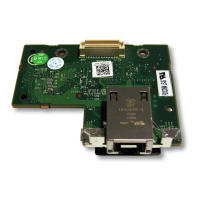102 Configuring iDRAC6 Enterprise Using the Web Interface
Secure Sockets Layer (SSL)
iDRAC6 includes a Web server that is configured to use the industry-standard
SSL security protocol to transfer encrypted data over a network. Built upon
public-key and private-key encryption technology, SSL is a widely accepted
technology for providing authenticated and encrypted communication
between clients and servers to prevent eavesdropping across a network.
An SSL-enabled system can perform the following tasks:
• Authenticate itself to an SSL-enabled client
• Allow the client to authenticate itself to the server
• Allow both systems to establish an encrypted connection
The encryption process provides a high level of data protection. iDRAC6
employs the 128-bit SSL encryption standard, the most secure form of
encryption generally available for Internet browsers in North America.
iDRAC6 Web server has a Dell self-signed SSL digital certificate (Server ID)
by default. To ensure high security over the Internet, replace the Web server
SSL certificate with a certificate signed by a well-known Certificate Authority
(CA). A Certificate Authority is a business entity that is recognized in the
IT industry for meeting high standards of reliable screening, identification,
and other important security criteria. Examples of CAs include Thawte and
VeriSign. To initiate the process of obtaining a signed certificate, you can use
iDRAC6 Web interface to generate a Certificate Signing Request (CSR) with
your company’s information. You can then submit the generated CSR to a
CA such as VeriSign or Thawte.
Certificate Signing Request (CSR)
A CSR is a digital request to a Certificate Authority (CA) for a secure server
certificate. Secure server certificates allow clients of the server to trust the
identity of the server and to negotiate an encrypted session with the server.
After the CA receives a CSR, they review and verify the information the CSR
contains. If the applicant meets the CA’s security standards, the CA issues a
digitally-signed certificate that uniquely identifies that applicant for
transactions over networks and on the Internet.

